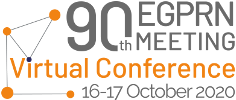E- Health Literacy among Primary Care Patients: A Cross- Sectional Study in Latvia
Anda Stolarova
Keywords: e- health literacy, primary care
Background:
The internet has become largely accessible. E-Health literacy - the ability to seek, evaluate and use online health information - is an essential prerequisite of health-related self- efficacy.
Research questions:
to assess e-Health literacy among primary care patients and in previously reported risk groups of low e-Health literacy among them.
Method:
Patients attending 7 primary care clinics in Riga were surveyed. A modified self- reported 7-item E- health literacy scale, score range 7-21, was used to measure e-Health literacy. The data was analyzed using SPSS-22. The low level of E- health literacy was defined as score 14 and less.
Results:
86,9% (154) of 175 patients surveyed used the internet: of those aged 16-44 years - 95,7%, of 45-64 years old - 82,8%, but of aged 66 and more - 61.0%. Of the internet users health information searched online 75.5% (53): of those aged 16-44 years 60.9% (39), of the 45-65 years old ones and 36,6% (15) in the elderly aged 66 and more. eHEALS score among internet users was lower in the age group of 45-65 years (14 (11-19)) than 16-44 years 16 (14-19), p=0,005), in patients with chronic diseases than without them (12 (11-16) vs. 15 (14-19), p=0.001) and with poor or satisfactory health status ((14 (11-16) vs 16 (13-19), p=0,007), but the median score did not depend on education (15 (12-17) secondary vs. 15 (12-19) higher education)). The low level of e- Health literacy was more frequent in seniors than in those aged 45-65 and 14-45 years (73,3% vs 59,0% vs 32,1%, p=0.040) in patients with chronic diseases (64,1% vs 38,2%, p=0,010) and with poor or satisfactory health status (58,9% vs 35,3%, p=0,014).
Conclusions:
E-health literacy scores are lower in patients over 45 years of age, with chronic diseases and poor/satisfactory self- reported health status.
Points for discussion:
The elderly, those with poor health status and chronic disorders might be on risk of disinformation because of lower e-health literacy.
The self- reported E- health literacy might not show the real e- health literacy.
Further studies in order to assess e- health literacy using more accurate methods and to determine strategies for prevention of disinformation such as eHealth skills training, directing patients to reliable websites, introducing a reliability label on health information resources on the internet should be conducted.
#114

